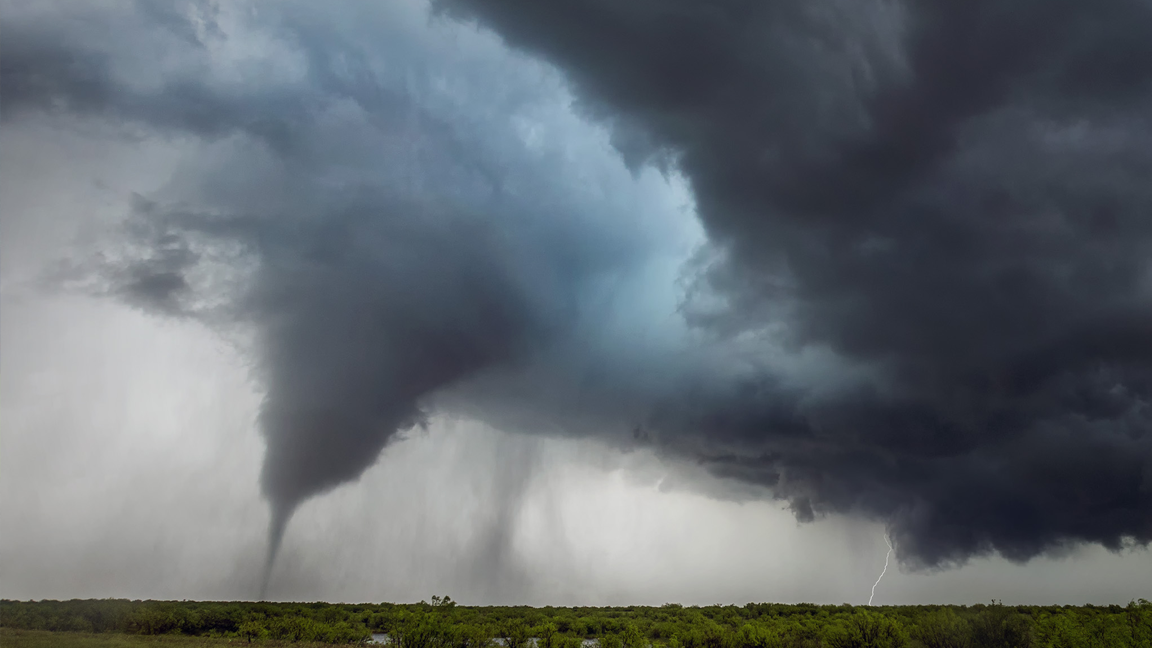Tornadoes are nature’s most violent storms. Spawned from powerful thunderstorms, tornadoes can cause fatalities and devastate a neighborhood in seconds.


Tornadoes are nature’s most violent storms. Spawned from powerful thunderstorms, tornadoes can cause fatalities and devastate a neighborhood in seconds. A tornado appears as a rotating, funnel-shaped cloud that extends from a thunderstorm to the ground with whirling winds that can reach 300 miles per hour. Damage paths can be in excess of one mile wide and 50 miles long. Every state is at some risk from this hazard. Some tornadoes are clearly visible, while rain or nearby low-hanging clouds obscure others. Occasionally, tornadoes develop so rapidly that little, if any, advance warning is possible. Before a tornado hits, the wind may die down and the air may become very still. A cloud of debris can mark the location of a tornado even if a funnel is not visible. Tornadoes generally occur near the trailing edge of a thunderstorm. It is not uncommon to see clear, sunlit skies behind a tornado.
Quick facts you should know about tornadoes:
Familiarize yourself with these terms to help identify a tornado hazard:
Tornado Watch – Tornadoes are possible. Remain alert for approaching storms. Watch the sky and stay tuned to NOAA Weather Radio, commercial radio or television for information.
Tornado Warning – A tornado has been sighted or indicated by weather radar. Take shelter immediately.
| If you are in: | Then: |
| A structure (e.g. residence, small building, school, nursing home, hospital, factory, shopping center, high-rise building) |
|
| A manufactured home or office |
|
| The outside with no shelter | If you are not in a sturdy building, there is no single research-based recommendation for what last-resort action to take because many factors can affect your decision. Possible actions include:
In all situations:
|
Inspecting the Damage
Safety During Clean Up